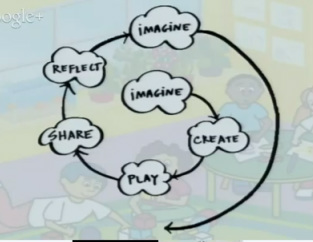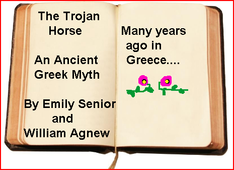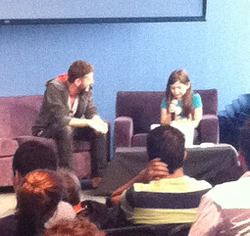
The first few lesson ideas through which I have gone have been pretty well structured. This structure has been, I hope, well justified because now the students have experience of sequencing, synchronising and looping. However, as I have mentioned before, Scratch was designed to allow the children's creativity and interests to play a bigger role. In other words, to make the learning more meaningful to the children. I was reminded of this when reading Scratch: Programming for All by Mitch Resnick et al.
The Learning Spiral above shows that creativity and imagination are at the heart of creative learning. This spiral caught my eye when I first discovered Scratch and I was reintroduced to it through the Media Lab's Learning Creative Learning course. So with this in mind, let's see how we can allow our students' imagination and creativity guide their learning.
The Learning Spiral above shows that creativity and imagination are at the heart of creative learning. This spiral caught my eye when I first discovered Scratch and I was reintroduced to it through the Media Lab's Learning Creative Learning course. So with this in mind, let's see how we can allow our students' imagination and creativity guide their learning.

The programming concepts learned so far lend themselves very well to the creation of animated stories. The type of story that is created again depends on the context of the learning. Free rein can be given in an after school or lunchtime club but in a school setting the context could link to a history topic or a particular book genre in English. I have used Scratch very successfully in a topic on the ancient Greeks, where the students used Scratch to tell tales from Greek legend. I'm particularly fond of this one about the Trojan Horse. Any English topic based on adventure or fantasy stories would support creative learning using Scratch to tell a story. I have also used Scratch to let the children to tell stories about English children evacuated from cities in World War II.

An animated story of this type can take several sessions and the students will consolidate their understanding of the computer programming concepts taught so far while engaging their creativity to a very high degree - whether it is in their drawings for backgrounds or sprites, voice acting, comic timing or some other aspect of the project. Quite often children working in pairs will complement each other - one, perhaps, doing the art and another the sound effects, while both develop the scripts.
So the children are working collaboratively, thinking creatively and all the while developing their computer programming and reasoning skills. Not bad for a few lessons.
So the children are working collaboratively, thinking creatively and all the while developing their computer programming and reasoning skills. Not bad for a few lessons.